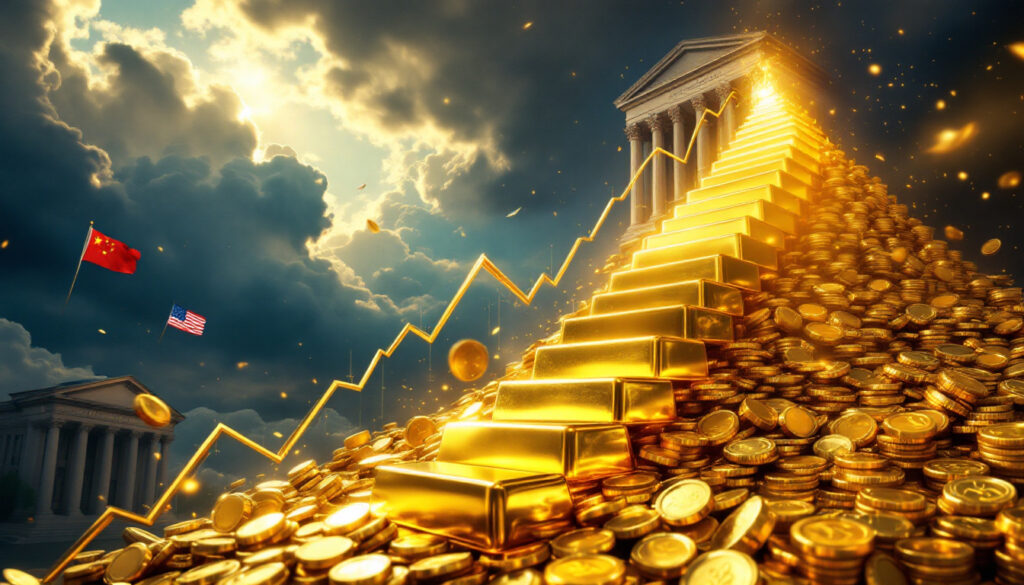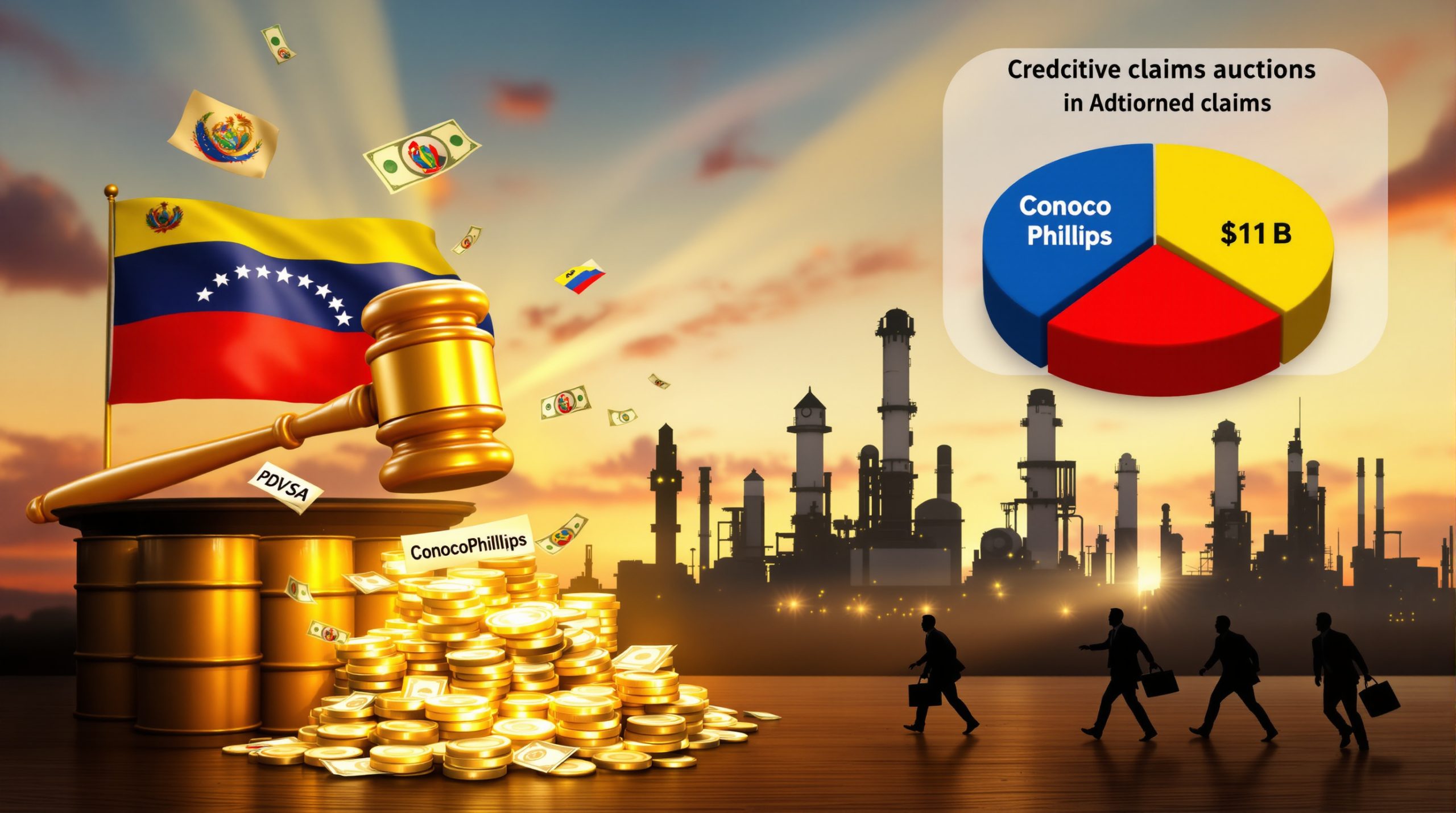Why Is Gold Hitting Record Highs in 2023?
The Meteoric Rise in Numbers
Gold has experienced an extraordinary surge in 2023, with prices soaring to unprecedented heights. In a single trading day, gold increased by $106 (3.31%), pushing the precious metal to $3,338 per ounce. During futures market openings, gold reached as high as $3,343.60, with futures contracts trading at $3,348. This remarkable performance represents a year-to-date gain of approximately 26%, establishing gold as one of the standout investment assets of the year.
The yellow metal has shattered 25 all-time highs this year alone, with 13 of these records occurring above the psychologically significant $3,000 level. This persistent upward trajectory reflects deep-seated market concerns about global economic stability and highlights gold's enduring appeal as a store of value during uncertain times.
Trade Tensions as a Primary Driver
Recent escalations in US-China trade tensions have emerged as a primary catalyst for gold's impressive rally. The Trump's market policies have created considerable market uncertainty, with investors increasingly nervous about potential economic fallout. The administration's investigation into potential new levies on US critical minerals imports has further exacerbated these concerns.
These gold prices and trade tensions have highlighted gold's traditional role as a safe-haven asset. When geopolitical uncertainties rise, investors typically seek refuge in gold to protect their wealth from market turbulence. The current climate of diplomatic and economic strain between the world's two largest economies has strengthened this narrative, driving substantial capital flows into gold markets.
Central Bank Buying Activity
A significant yet often underreported factor in gold's price surge has been the sustained purchasing activity from central banks worldwide. High-conviction buying began approximately one year ago and has maintained remarkable momentum since then. China's central bank, in particular, has expanded its gold reserves for five consecutive months, signaling strong institutional confidence in the metal's long-term value proposition.
In an equally telling development, Iran has shifted its import priorities dramatically, with gold now topping its list of purchased commodities. Market analysts suggest that unreported central bank acquisitions may be even more substantial, contributing significantly to gold's price momentum behind the scenes. This institutional accumulation provides a sturdy foundation for gold's ongoing rally, distinguishing it from more speculative market movements.
How Does This Gold Rally Compare to Historical Precedents?
The 1980 Gold Price Benchmark
The current gold rally invites comparisons to the historic surge during the Iranian revolution, when prices skyrocketed by 118% between November 1979 and January 1980. During that period, gold reached what was then an astronomical $850 per ounce. When adjusted for inflation, this 1980 high would equate to approximately $3,493.95 in today's dollars.
Market observers have identified $3,500 as the next significant psychological and historical milestone for gold. Reaching this level would symbolize gold breaking through its inflation-adjusted all-time high, potentially triggering another wave of investment interest. This historical context provides valuable perspective on the current rally, suggesting that despite recent gains, gold may still have room to run before entering truly uncharted territory.
Unique Factors in the Current Rally
Unlike previous gold bull markets, the current surge benefits from structural demand changes, particularly the proliferation of gold-backed exchange-traded funds (ETFs). These investment vehicles have added a "new component" to gold's traditional price drivers, democratizing access to gold investment for retail investors. In the first quarter of 2023 alone, gold ETFs saw massive inflows totaling 226.6 metric tons, representing approximately $21.1 billion in new investment.
Chinese investors have shown record participation in gold ETFs, marking a significant shift in regional investment patterns. Additionally, the lower US dollar—currently near a three-year low—has made gold more attractive to foreign investors by effectively reducing the entry price in their local currencies. This combination of ETF accessibility, broadening global participation, and dollar weakness creates a uniquely powerful cocktail of demand factors supporting gold's hedge role.
What's Happening Across the Precious Metals Market?
Performance of Other Precious Metals
While gold has dominated headlines, other precious metals have shown mixed performance. Silver has followed gold's upward trend, albeit less dramatically, rising $0.43 (1.33%) to $32.84 per ounce. Platinum has also managed modest gains, climbing $8 to $976 per ounce.
In contrast, palladium has moved in the opposite direction, falling $4 and dropping below the $1,000 per ounce mark. Rhodium has similarly declined, losing $50 in recent trading. These divergent performances highlight the unique market dynamics affecting each precious metal, with industrial demand playing a more significant role for platinum, palladium, and rhodium compared to gold.
Gold's Outperformance
Gold's significant outperformance relative to other precious metals underscores its exceptional position in the current market environment. The yellow metal is functioning beyond its traditional role as a wealth preservation device, emerging as both a monetary hedge and a geopolitical insurance policy.
Notably, gold's price increase has not been primarily driven by dollar weakness, as is often the case. Instead, multiple concurrent factors—including institutional buying, retail demand, and safe-haven flows—have combined to create unusually strong upward pressure on prices. This multi-faceted demand profile suggests the current rally may have more sustainable foundations than previous gold bull markets.
What Do Experts Predict for Gold's Future?
Analyst Forecasts and Targets
Independent analyst Ross Norman has characterized gold's recent performance as a "recalibration to reflect the current state of world affairs." Norman and other market experts predict that $3,500 gold is "around the corner," representing the next major target for the precious metal. The current price action is widely described as a "distinct warning bell" about global economic conditions, reflecting deep institutional concerns about financial stability and geopolitical risks.
Adrian Ash of Bullion Vault reports that "new inflows are running strong" despite some profit-taking by long-term investors. This continuous stream of fresh capital suggests that market sentiment remains broadly bullish, with new buyers emerging to replace those taking profits after gold's impressive run.
Support Levels and Sustainability
Market technicians have identified a potential new support level between $2,900-$3,000, representing a significant elevation from previous consolidation zones. The extended duration of record highs indicates stronger market support than in previous cycles, when new price records were often quickly followed by sharp corrections.
However, analysts note that the current rally is largely driven by fear-based buying, raising questions about its sustainability should geopolitical tensions ease. While institutional demand provides a solid foundation, retail investor psychology could shift rapidly in response to changing headlines, potentially introducing volatility into the gold market. For more insight, Reuters reports that markets continue to grapple with US tariff uncertainty.
How Can Investors Approach Gold at Record Prices?
Investment Strategies for High-Priced Gold
With gold trading at record prices, fractional gold options have become increasingly attractive for retail investors. These smaller denominations—including tenth ounce, quarter ounce, half ounce, and gram sizes (1g, 5g, 10g)—allow investors to maintain exposure to gold while managing their capital outlay more effectively.
Portfolio allocation recommendations from financial experts suggest maintaining some gold exposure despite high prices, with many advisors recommending a 5-10% allocation as a strategic hedge. Investors are also encouraged to view temporary pullbacks as potential buying opportunities, adopting a dollar-cost averaging approach rather than attempting to time the market perfectly. According to Investopedia, understanding the factors behind gold's surge can help investors make more informed decisions.
Risk Considerations
Despite gold's strong performance, investors should remain mindful that current prices could represent a market top, particularly if trade tensions ease or central banks moderate their purchasing activity. Fear-driven rallies can be subject to sharp corrections, as witnessed in previous gold cycles when prices retreated significantly after reaching new highs.
Financial advisors emphasize the importance of maintaining a long-term perspective when investing in precious metals, focusing on gold's wealth preservation characteristics rather than short-term price speculation. Diversification across multiple asset classes remains essential, with gold serving as one component of a balanced portfolio rather than a standalone investment strategy.
FAQ About Gold and Trade Tensions
What is driving gold prices to record highs?
Gold prices and trade tensions are closely linked, with multiple factors including US-China trade disputes, central bank buying, ETF inflows, and a weaker US dollar driving prices to record levels. The uncertainty surrounding tariff policies has particularly contributed to investors seeking safe-haven assets. The combination of institutional demand and retail investor participation has created unusually strong buying pressure, pushing prices to record highs.
How does the current gold rally compare to historical gold bull markets?
The current rally shares similarities with the 1980 gold bull market during the Iranian revolution, which saw prices rise 118%. However, today's rally includes new demand factors like gold ETF strategies and unprecedented central bank buying that weren't present in previous cycles. The structural market changes, particularly the accessibility of gold investment through ETFs, have broadened participation and potentially increased the sustainability of the current price trend.
What price level would represent a true record high for gold in inflation-adjusted terms?
For gold to reach a true record high in inflation-adjusted terms, it would need to hit approximately $3,493.95, which is the equivalent of the 1980 high of $850 adjusted for inflation. Many analysts consider this level achievable in the current market environment, particularly if trade tensions escalate further or additional economic uncertainties emerge. Thorough gold price analysis suggests multiple factors supporting this potential upside.
How are other precious metals performing compared to gold?
While gold has surged dramatically, other precious metals are showing mixed performance. Silver and platinum are up but at lower percentages, while palladium and rhodium are actually down, demonstrating gold's unique position in the current market. This divergence reflects gold's monetary characteristics compared to the more industrial applications of other precious metals, which face headwinds from manufacturing slowdowns and supply chain disruptions. Understanding gold and silver trends can provide valuable context for investors.
Ready to Profit from the Next Gold Price Surge?
Stay ahead of the market with real-time alerts on significant ASX gold discoveries, powered by Discovery Alert's proprietary Discovery IQ model that identifies high-potential opportunities before the broader market. Explore how major mineral discoveries can lead to exceptional returns by visiting Discovery Alert's dedicated discoveries page and start your 30-day free trial today.




